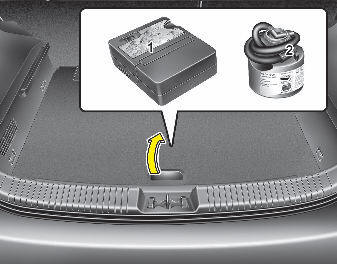
Hyundai Elantra Owners Manual
If you have a flat tire (with tire mobility kit)What to do in an emergency / If you have a flat tire (with tire mobility kit)

Please read the instructions before using the Tire Mobility Kit.
(1) Compressor
(2) Sealant bottle
![]() WARNING
WARNING
For safe operation, carefully read and follow the instructions in this manual before use.
Introduction
Notes on the safe use of the Tire Mobility Kit
Components of the Tire Mobility Kit
Using the Tire Mobility Kit
Distributing the sealant
Setting the tire inflation pressure
Technical Data



┬® 2026 www.hyundaielantramanual.com. All Rights Reserved.



